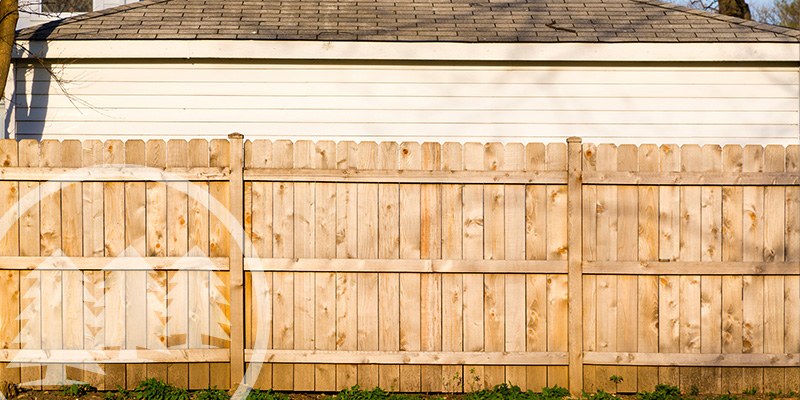Every community should have clear HOA fence rules for homeowners to follow. These rules not only help uphold the community’s curb appeal but can also prevent disputes between neighbors, especially when it comes to property boundaries. Additionally, fences add a layer of security for homeowners and help keep pets on the premises.
The Importance of HOA Fence Rules
Fence rules are important because they help maintain a consistent and attractive appearance throughout the community. These rules ensure that all fences follow specific standards for height, style, color, and placement. Proper HOA fencing can protect property values and support neighborhood aesthetics.
Additionally, fence rules also promote safety by setting clear guidelines. For instance, fence rules can set standards for visibility, especially near sidewalks and intersections. This ensures that fences don’t create hazards for residents in the community.
Furthermore, HOA fence rules help prevent disputes between neighbors. These rules clarify boundaries and avoid obstructions or damage to shared spaces. Ultimately, with these rules, an association can balance individual preferences with the overall look and harmony of the community.
Can an HOA Prohibit Fences? 
Whether an HOA can prohibit fences depends on two factors: state laws and the association’s governing documents. State laws may prevent an association from banning fences altogether.
For instance, in Texas, Section 202.023 of the Texas Property Code states that associations may not prohibit the installation of security measures, which include perimeter fencing. That said, the same section does allow associations to regulate the type of fencing an owner installs.
If state laws are silent, homeowners should check their association’s governing documents. The CC&Rs and bylaws, in particular, should consist of any fencing regulations and the association’s authority to enforce them.
If neither state laws nor the governing documents grant the HOA the power to enforce fence rules, then homeowners may challenge the association for any such prohibition or restriction.
Common Rules on HOA Fences
Understanding HOA fence guidelines is essential for any homeowner planning to install a fence. These rules help preserve curb appeal, promote safety, and maintain the community’s overall character. Each association has its own standards, but some rules are more common than others.
In a typical HOA setting, fence rules can include but are not limited to: setbacks, height, material, color, style, maintenance, and architectural approval. Let’s break these down below.
1. Fence Setbacks
Among the most important HOA fence rules is the setback requirement. This rule specifies the distance that a homeowner’s fence must be from property lines. Since boundaries are not always visible, owners should refer to the community plat or their property survey for clarification. Once they know their property line, they must measure the correct setback before beginning construction.
2. Fence Height 
One of the most common HOA fence rules involves height limits. Many associations set maximum fence heights, such as five feet, with slats spaced no more than nine inches apart. These numbers can vary greatly by community.
Height rules often aim to preserve sightlines and neighborhood aesthetics. Tall fences may block a driver’s view at intersections or cover up homes that should remain visible. Boards use height restrictions to maintain an open and balanced streetscape.
3. Fence Material 
Fence rules in an HOA often include material restrictions. Homeowners may only use specific materials, such as wood, vinyl, or composite, when building fences. This will ensure consistency across the community. After all, a single metal fence in a whole street of picket fences can disrupt the visual flow of the neighborhood.
4. Fence Style
Each community has a distinct look, and HOA fence rules help preserve that identity. Style rules typically list what types of fences the association deems acceptable. For example, an HOA’s rules may permit wood lattice fencing but prohibit chain-link or ornamental iron fencing. Homeowners should always check the list of approved styles to avoid violations.
5. Fence Color
Most associations regulate house colors, and this usually extends to fences as well. Boards often provide a list of approved paint or stain colors. If an owner wants a blue fence, they need to confirm whether the rules permit it. These rules support a unified appearance across the neighborhood and prevent disharmony in color schemes.
6. Fence Maintenance
Under common HOA fence rules, owners must keep their fences in good condition. Maintenance includes tasks like cleaning, repainting, and repairing any damage. Just as the HOA maintains shared spaces, individual homeowners are responsible for maintaining their own property, including fences, to keep it safe and visually appealing.
7. ARC Approval
Before starting construction, most HOAs require approval from the board or Architectural Review Committee (ARC). This step ensures the proposed fence meets the community’s design standards.
To apply for approval, owners typically submit a request with the fence’s height, material, style, and color. Some associations require homeowners to hire only licensed and insured contractors to help protect the association. If an owner skips this step, it can lead to monetary fines or an order to remove the fence entirely (at their own expense).
A fence that doesn’t fit the community’s look can lower property values and upset neighbors. The approval process can help prevent such incidents from occurring. In some associations, homeowners can’t install their own fences unless they hold a proper contractor’s license as well. This requirement ensures quality and safety for both the homeowner and the community.
What Happens When You Violate HOA Fence Rules?
Homeowners have a responsibility to comply with the association’s rules. When they violate these rules, they may face several potential consequences, including fines and a temporary suspension of their privileges.
Before any disciplinary action, association boards must provide notice and allow owners to be heard. At this hearing, owners can present their case and evidence. Board members can then decide whether to pursue disciplinary action.
If an owner installs or modifies a fence without approval, the HOA may order the owner to reverse the changes at their own expense. After that, they can go through the proper channels to secure permission from the ARC. After obtaining approval, they can then apply the changes, once again at their own expense.
A Two-Pronged Approach
Some homeowners may find HOA fence rules troublesome or limiting, but they serve a greater purpose. These rules preserve community aesthetics, property values, and safety within the association. Homeowners must abide by these rules or risk facing a penalty.
Meanwhile, association boards must ensure that the fence rules are reasonable and enforceable. Consistency and fairness are key. Hiring an HOA management company can help with rule enactment and enforcement.
Cedar Management Group provides HOA management services, including maintenance and enforcement of violations, to communities. Call us today at (877) 252-3327 or email us at help@mycmg.com to get started!
RELATED ARTICLES:
- Is Installing A HOA Pool Fence A Legal Requirement?
- HOA Public vs Private Streets: A Matter Of Parking And Security
- HOA Security Cameras: Maintaining Security And Privacy






